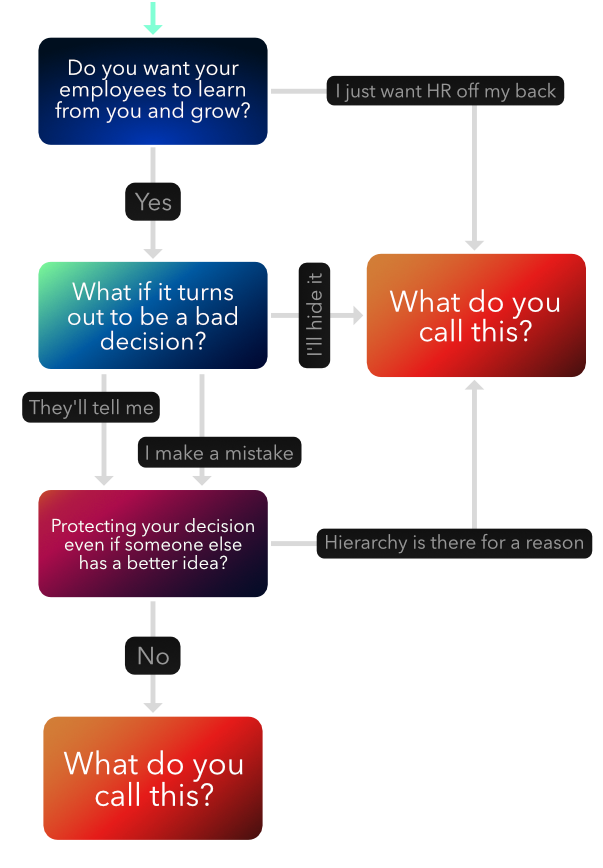This AI Agent Writes Its Own Story
A software development experience building an autonomous AI agent using AI coding and brainstorming assistants - the benefits, challenges, and insights gained

The opinions expressed here are my own, do not reflect the views of my organization, and should not be be attributed to or associated with my organization in any manner.

Wait, what is “culture”?
Culture represents the attitudes and behaviour characteristic of a particular social group.
Sometimes culture can also be defined as the personality of the group, as GitLab assumes too. I personally find that definition appealing. Different organizations define culture in various ways, some opting for more elaborate explanations than others. Regardless of which definition resonates with you, one thing remains clear: culture is not something we read and accept as a fixed entity. It is a dynamic, unwritten set of rules and assumptions that constantly evolves.
For better or worse, many organizations with hierarchical structures tend to develop a culture around the vision of their leaders, which is then influenced by the ever-changing mission of the organization. This type of culture is often documented as a set of principles used for hiring and organizational growth. However, an online document describing an organization’s culture rarely provides a comprehensive glimpse into what truly happens within it.
Why is that?
Of course, there are situations where the publicly portrayed version of an organization’s culture aligns closely with reality. These organizations often engage in community efforts, welcome online and offline criticism, and foster direct connections with the outside world. In such cases, employees naturally form relationships and take pride in being part of such a workplace, without explicit directives from the top.
I believe there is a strong connection between culture and transparency, particularly in the hierarchical structures of many organizations today. I have always believed that the downsides of non-transparent, top-down, profit- and growth-oriented organizations are apparent to everyone, including their leadership.
However, recent global events have proven this belief to be false, or at least raised doubts about how the short-term deterioration of culture impacts long-term goals. It is precisely because of this that I am writing about the benefits of fostering a transparent organizational culture. My hope is that some of my 124 readers hold managerial positions within their organizations and can gain insights from this exploration.

After conducting extensive research on transparency and exploring the perspectives of various organizations and individuals, I have compiled their thoughts and opinions into the following sections.
Let’s go in the opposite direction for a little bit, and acknowledge one thing first: transparency can and is harmful in some situations.
I hope that we agree that all of these are valid, and there are probably more similar situations where transparency can lead to harm rather than good.
Taking the other point of view, we can argue the following:
I hope that we can agree on the validity of these statements, as well as acknowledge that there are numerous additional benefits that could be included.
As much as I dislike the current Internet/office culture, it is evident that the term “transparency” has become overused, misused, and abused. Paradoxically, it is also frequently underutilized… all of which, combined, has turned it into a buzzword. So, I think Yes.
I believe that this situation is an unfortunate consequence of intense marketing efforts coming from various big corporations, in an attempt to convince the wider audience of a certain brand image they’d like to stand behind. This is not a protest note against corporations – it would be quite ironic to write that – but instead an attempt to understand how we got to this state and what can be done to improve it.
Recommendations related to this section:

As highlighted by Simon in the recommended material mentioned above, it seems that there is a scarcity of organizations that truly grasp what transparency means (or should mean). Instead, due to its buzzword status, most organizations tend to adopt one of two extreme positions on the transparency scale: oversharing vs. not sharing at all.
My argument is that we need to adopt a different attitude towards transparency in our organizations. Transparency shouldn’t be limited to either extreme. It’s not about sharing every single detail with everyone. It’s about providing the necessary context to enable good decision-making — before, during, and after.
We can’t expect to be experts in everything, which means we often don’t fully understand the work and output of others. For example, I struggle to understand the financial income documents shared with me each month. If I tried to interpret them without proper knowledge, I could end up misinterpreting the information and causing unnecessary concern for the hard-working people in the finance department.
People have a natural inclination towards positive news, obviously. But surprisingly, people are capable of handling bad news too! However, when transparency is lacking, individuals are often left in a gray area between the two, where creativity flourishes, giving rise to unfounded fears, concerns, and dangerous decision-making.
Therefore, the main argument here is to allow people to choose whether they want to receive context around the decisions being made. Those who are uninterested can opt out, while those who value being informed will appreciate the opportunity to stay in the loop and make more informed decisions themselves. This is how a self-correcting culture is created.
Yes, I will argue with myself now…
To counter the previous claims, you may say that transparency is not about the content or context of information, but rather about accessibility of context. Manipulation of content and context can shape narratives – for example, greenwashing – a simple marketing strategy that involves misleading the public by exaggerating an organization’s “green” activities while hiding environmentally destructive practices.
It looks like it’s a different perspective, but I do agree with this. The idea of allowing individuals to opt-in for transparent decision-making and emphasizing accountability aligns well with my point of view. Transparency is indeed a catalyst for accountability, change, and social progress. It is crucial for influential individuals to take the lead in claiming and fostering transparency.
I would just add that, unfortunately, this lack of accessibility-oriented transparency extends to both public and private sector activities, where secrecy often outweighs the importance of human lives and the well-being of our planet. Privacy, confidentiality, and the notion of “security” are given priority at any cost, even if it comes at the expense of our environment and social lives. Again, we need to meet somewhere in the middle, even though I personally like Buffer’s approach.
This thought experiment aims to highlight intriguing questions that arise from our decision-making processes. Imagine yourself as the leader of a fictional organization, and consider the following chart.
 Hint: one end result is toxic and the other one is workplace safety
Hint: one end result is toxic and the other one is workplace safety
Questions that arise from here, put in the perspective of one of your direct reports:
Given my obvious inclination, I’ll leave it to you to draw conclusions from this thought experiment.

Let’s follow Simon’s line of thinking again, and let me tell you a seemingly fictional story about a corporate manager who attended a conference.
This manager represented his company at the conference and was treated as an important guest. The conference organizers arranged a hotel for him, provided a car with a driver to take him to the venue, and organized a delightful lunch with the event organizers. He even received a personalized cup with his name on it. The warm greetings and immense respect from everyone made him feel truly great.
The following year, he made a career move and started working remotely for a smaller startup. Excited to attend the same conference again, he looked forward to a similar experience. However, to his surprise, nobody seemed to remember him. There was no car, no hotel booking, and no personalized cup… instead, he was handed a regular plastic cup, just like everyone else. It was at that moment he realized that the people he interacted with previously only valued his business engagement at the time, and his importance was only tied to his business title.
This story sheds light on how easily people can mistake business influence, authority, and hierarchy for personal value. It’s a phenomenon that occurs more frequently than one might think. Respect and authority do not magically appear simply because of a given title.
These values must be earned, whether you hold a lower position in the hierarchy or sit at the top. Otherwise, you rule with an iron fist, at the risk of creating a culture of fear within your group. In this toxic environment, individuals are constantly on guard – mistrusting one another, holding knives against each other’s backs, and focusing only on survival.
Keep that story in mind as we conclude.
As an organizational leader, you occupy that top position. It’s important to remember that your position is within your specific hierarchy and organization. Your position is not guaranteed, and is subject to performance. You are sitting in a shaky chair, constantly facing strong winds that threaten to bring you down.
It is a top priority to establish a solid foundation under that chair. You are responsible for:
There are many ways to deliver work with those responsibilities in mind. However, there is only one way to do that sustainably – and that’s with the support of all the people in your reporting line. They need to be your partners, and not your minions… unless you are comfortable with leading through fear, expecting them to blindly execute your directives.
Yeah, I am not comfortable with that, either.

